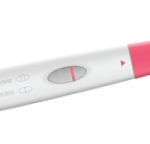 A recent study in Gastroenterology evaluated concentrations of adalimumab and infliximab in the umbilical cord blood of newborns and the rates of drug clearance after birth.1 Researchers also evaluated how the drug concentrations correlated with maternal drug concentrations and neonatal risk of infection during the first year of life.
A recent study in Gastroenterology evaluated concentrations of adalimumab and infliximab in the umbilical cord blood of newborns and the rates of drug clearance after birth.1 Researchers also evaluated how the drug concentrations correlated with maternal drug concentrations and neonatal risk of infection during the first year of life.
This prospective, multi-center study of pregnant women (n=80) with inflammatory bowel diseases outside of the U.S. was conducted from March 2012 through November 2014. Most women (88%) received anti-tumor necrosis factor (TNF) in the six months prior to conception, as well as during pregnancy. Ten women (12%) had started anti-TNF treatment in the first trimester or early in the second trimester of pregnancy. During this timeframe, 36 participants received adalimumab, and 44 received infliximab. Additionally, 39 women received concomitant thiopurines (i.e., azathioprine, 6-mercaptopurine and 6-thioguanine). The last dose of anti-TNF given during pregnancy was administrated at a median of gestational Week 35 (range 14–41) for adalimumab and gestational Week 30 (range 8–37) for infliximab (P<0.001).
The data collected included disease activity and treatment before, during and after pregnancy. The concentrations of anti-TNF agents were measured in blood samples from women at delivery, from the umbilical cords and from the infants every three months until the drug was no longer detected. In the infants, the drugs were detected until age 12 months. The time from last exposure to anti-TNF agent during pregnancy correlated inversely with concentration of the drugs in the umbilical cord and in the mothers at the time of birth (P<0.0001 for both).
The median ratio of infant-to-mother drug concentration at birth was 1.21 for adalimumab and 1.97 for infliximab. In infants exposed to adalimumab, the mean time to drug clearance was four months and 7.3 months for infliximab. This result shows a 46% slower clearance of anti-TNF in infliximab-exposed infants vs. adalimumab-exposed infants. No adalimumab-exposed infants had detectable concentrations after nine months, but five (11%) infliximab-exposed infants had detectable concentration at nine months. The estimated mean half-life was 26 days for adalimumab and 33 days for infliximab. There were no statistically significant associations between the drug half-life and birth weight.
The relative risk of infection was almost three times higher in infants whose mothers received the combination of an anti-TNF agent and thiopurine compared with women who received only anti-TNF therapy. Bacterial infections developed in four infants (5%), and viral infections developed in 16 (20%) infants during the observational period—all infectious courses were not severe. Continuing maternal anti-TNF treatment after gestational Week 30 did not increase the likelihood of infection in infants compared with discontinuing anti-TNF agents prior to gestational Week 30.
